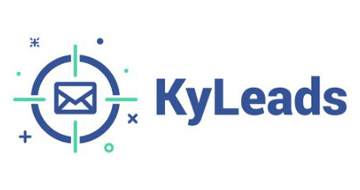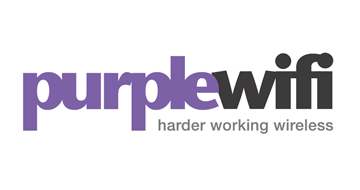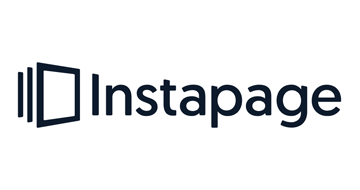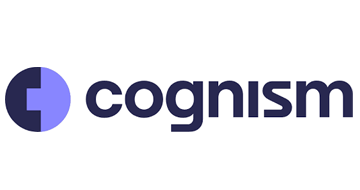
| Starting price | $14/user/month |
|---|---|
| Pricing model | Tiered per user |
| Free Trial | 15-day |
| Free Version | Yes (3 users) |
Maximize your lead generation efforts with the best lead management software solutions. Streamline your lead tracking, nurturing, and conversion processes to drive business growth.
Find the best value lead generation software on SaasGenius.
Discover our carefully compiled list of the best lead management software solutions. Find the best value lead management software to effectively manage your leads and optimize your sales pipeline.

| Starting price | $14/user/month |
|---|---|
| Pricing model | Tiered per user |
| Free Trial | 15-day |
| Free Version | Yes (3 users) |

| Starting Price | $40/mo |
|---|---|
| Pricing Model | Subscriber based |
| Free Trial | 14-day |
| Free Version | No |

| Starting price | $15/mo |
|---|---|
| Pricing model | Per User |
| Free Trial | 14-day |
| Free Version | No |
| Starting price | $19/mo |
|---|---|
| Pricing model | Per User |
| Free Trial | No |
| Free Version | Yes |

| Starting price | $17/month |
|---|---|
| Pricing model | Per User |
| Free Trial | Yes |
| Free Version | No |

| Starting price | $49/mo |
|---|---|
| Free trial | Yes, 14 days |
| Free version | No |

| Starting Price | Contact for price |
|---|---|
| Pricing Model | Subscriber based |
| Free Trial | No |
| Free Version | No |

| Starting Price | $49/mo |
|---|---|
| Pricing Model | Per Team |
| Free Trial | 30-days |
| Free Version | Yes |

| Starting price | Contact for price |
|---|---|
| Pricing model | Subscriber based |
| Free Trial | Yes |
| Free Version | No |

| Starting Price | Contact for price |
|---|---|
| Pricing Model | Quotation Based |
| Free Trial | No |
| Free Version | No |

| Starting Price | $299 / Month |
|---|---|
| Pricing Model | Subscriber based |
| Free Trial | Yes |
| Free Version | No |

| Starting Price | Contact Sales |
|---|---|
| Pricing Model | Packages |
| Free Trial | Per Request |
| Free Version | No |

| Starting Price | US$95 per month |
|---|---|
| Pricing Model | Tiered Pricing |
| Free Trial | No |
| Free Version | No |

| Starting Price | Contact ZoomInfo for a quote |
|---|---|
| Pricing Model | Quotation based |
| Free Trial | Yes |
| Free Version | No |

| Starting Price | $49/month |
|---|---|
| Pricing Model | Subscriber based, Per User |
| Free Trial | Yes |
| Free Version | Yes |

| Starting Price | $297/ month |
|---|---|
| Pricing Model | Subscriber based, Quotation based |
| Free Trial | No |
| Free Version | No |
In sales, the term “lead” generally refers to a person who is identified as having the potential to become a business client. Based on that definition, lead management software is a sales platform that helps businesses categorize promising leads and nurture and analyze them to convert them into business opportunities.
Ordinarily, in sales, leads are gathered from many different channels and are filtered into your lead management system, where efforts will be made to convert them into actual clients that will benefit the business. This process is made easier by using lead management tools, such as the ones mentioned in this review.
The main job of a lead management tool is to improve the effectiveness of an existing sales team in sales generation. On its own, this software cannot manage and organize potential leads. It needs to be integrated into an already existing sales strategy.
Due to the use of the internet to conduct the majority of modern business, a lot of data is generated from online transactions. This is the data that sales teams need when they are evaluating potential clients for the business. However, the sheer amount of data that is generated makes the task of collecting it very difficult, which is why they need the help of lead management systems.
These tools will collect all the important data and separate it from other useless information that is not important to the sales team. Once this data has been collected, it will be presented in an easy-to-understand format that can be used to visualize a general picture of how sales are going and what needs to be done to improve them.
Understanding the lead management lifecycle is essential for maximizing conversion rates. The process typically unfolds across seven distinct stages that work together to transform prospects into paying customers.
Lead Generation begins when potential customers first discover your business through various channels. These touchpoints include organic search results, paid advertisements, email marketing campaigns, social media platforms, content downloads, webinars, and referrals. The goal is to attract individuals who match your ideal customer profile and show genuine interest in what you offer.
Lead Capture follows immediately after, where you collect essential contact information and behavioral data. This typically happens through web forms, landing pages, chatbots, live chat interactions, newsletter signups, and gated content downloads. Modern lead management systems automatically capture this information and sync it with your CRM software to create comprehensive contact profiles.
Lead Qualification separates promising prospects from those who aren’t ready to buy. Your team assesses factors like budget availability, decision-making authority, specific needs alignment with your solution, and timeline for purchase. This critical stage prevents sales teams from wasting resources on low-potential leads and ensures energy is directed toward opportunities with the highest conversion probability.
Lead Scoring assigns numerical values to each lead based on predetermined criteria. Demographic factors such as company size, industry, and job title combine with behavioral signals like website visits, email engagement, content downloads, and webinar attendance. This systematic approach allows your team to prioritize outreach efforts effectively.
Lead Distribution ensures the right sales representative handles each prospect. Advanced lead management software routes leads based on geographic territory, product specialization, deal size, industry expertise, or team availability. Automated assignment rules eliminate manual sorting and reduce response times significantly.
Lead Nurturing maintains engagement with prospects who aren’t ready to purchase immediately. Through personalized email sequences, targeted content delivery, educational webinars, retargeting ads, and timely follow-ups, you build relationships that position your solution as the obvious choice when buying time arrives.
Lead Conversion represents the final stage where a qualified lead becomes a customer. Whether through direct sales calls, product demonstrations, proposal presentations, or trial conversions, this phase turns your cultivation efforts into revenue.
Each software is assigned a unique score, called the Genius Score, which ranges from 0 to 100, with 100 being the highest. The Genius Score is determined through a combination of thorough research, analysis of user reviews, and internal testing. Our goal is to provide unbiased and accurate reviews so you can find the best value lead management software for your needs.
To qualify as the best lead management software, a system has to have various features that it uses to accomplish its given tasks. These are defined as follows:
The ability to dynamically integrate customer information through various sales campaigns based on valuable data on customer behavior.
Allows a user to increase business productivity by assigning and routing tasks to different members of the sales team and also notifying them immediately about any changes or updates.
This keeps track of all-important leads and, when necessary, schedules the best time to act upon them to achieve high rates of success when converting these leads into actual sales.
Analyze various statistics, trends, and market information and report it to team members in an easy-to-understand format.
Keeps all the gathered personal information about customers safe and confidential.
Different platforms offer varying capabilities. This comparison helps you identify which features matter most for your business needs.
| Feature Category | Basic Systems | Mid-Tier Systems | Enterprise Systems |
|---|---|---|---|
| Lead Capture | Web forms, basic integrations | Multi-channel capture, chatbots, API integrations | Advanced capture with AI enrichment, real-time validation |
| Lead Scoring | Manual scoring | Rule-based automated scoring | AI-powered predictive scoring with machine learning |
| Lead Distribution | Manual assignment | Round-robin or rule-based routing | Intelligent routing with workload balancing and availability |
| Automation | Basic email templates | Multi-step workflows, trigger-based actions | Complex branching logic, cross-channel orchestration |
| Analytics | Basic reports and dashboards | Custom reports, conversion tracking | Advanced analytics, predictive insights, revenue attribution |
| Integrations | 5-10 popular apps | 20-50 integrations | 100+ integrations, custom API access |
| Mobile Access | Limited mobile view | Full mobile app with core features | Complete mobile functionality with offline capabilities |
| User Management | Single user or small team | Role-based permissions, up to 50 users | Advanced permissions, unlimited users, team hierarchies |
The huge difference in lead generation and boost in sales that are witnessed when a business decides to integrate lead management software is enough to prove that there are obvious benefits to using this platform.
Here are six potential benefits that may result if you decide to invest in one of the best lead management software systems listed in this review:
With a large amount of customer data that is available, it is very easy to lose vital information about a particular client, which might result in missing out on a great opportunity. With a proper lead management tool as your guide, all information is stored securely, making it readily available when you need it.
It is not enough just to identify an individual as a potential customer. The lead has to be handled in the right way so that you know how best to approach them in a way that has the best chances of success, and a good lead management system can do this.
There is no time to waste going after a lead that has very few prospects of turning out into a client. A lead management tool will allow you to focus your energy on only the important leads.
With a lead management system, you can focus on the important leads first, while at the same time saving some time to look into other less likely options that might turn out to be great opportunities if handled correctly.
The first step is to understand what kind of service or product your leads are usually looking for. By giving you the transaction and search data of important leads, lead management software will give you a better understanding of your clients.
By bringing everyone together on the same platform, lead management software will allow your team to improve how they coordinate when handling tasks. This will result in higher levels of efficiency and productivity.
While often used interchangeably, lead management software and CRM software serve distinct but complementary purposes in your sales technology stack.
Lead management software specializes in the early stages of the customer journey. It excels at capturing prospects, qualifying their readiness, scoring their potential value, and nurturing them toward purchase decisions. These platforms prioritize lead-specific workflows, automated scoring algorithms, and conversion-focused features that help you identify and prioritize your best opportunities before they enter the formal sales process.
CRM platforms take a broader approach to relationship management. Once leads convert to customers, CRM systems manage the entire customer lifecycle, including post-sale activities, customer service interactions, account management, renewal tracking, and upsell opportunities. These systems maintain comprehensive customer histories and facilitate ongoing relationship building.
Many modern platforms blur these boundaries. Comprehensive sales solutions now combine robust lead management capabilities with full CRM functionality, eliminating the need for separate systems. When evaluating options, consider whether you need specialized lead management features or if an integrated CRM with strong lead management capabilities better serves your business model.
For businesses using multiple platforms, seamless integration between their lead management and CRM systems becomes critical. This ensures smooth handoffs when leads convert to customers and prevents data loss during transitions.
Even with powerful software, businesses encounter obstacles that undermine lead conversion efforts. Understanding these challenges helps you implement solutions proactively.
Research shows that companies responding within the first hour are nearly seven times more likely to qualify leads than those who wait longer. Yet many businesses struggle with timely follow-up due to manual processes or insufficient staffing.
Solution: Implement automated lead distribution rules that instantly route new leads to available sales representatives. Set up automated acknowledgment emails that confirm receipt while your team prepares personalized outreach. Use lead management software with mobile notifications to ensure no opportunity slips through the cracks.
Sales teams often complain about receiving unqualified leads that waste valuable selling time. This typically stems from misalignment between marketing automation and sales expectations or inadequate qualification criteria.
Solution: Establish clear lead qualification frameworks that both teams agree upon. Implement progressive profiling in your forms to gather essential information gradually. Use predictive lead scoring that combines demographic and behavioral data to identify truly sales-ready prospects.
Contact information becomes outdated rapidly, with studies suggesting that databases degrade by roughly 25% annually as people change jobs, update email addresses, or modify phone numbers.
Solution: Implement regular data hygiene practices within your lead management software. Use automated validation tools that verify email addresses and phone numbers at capture. Schedule quarterly data cleaning initiatives and encourage your team to update information during every customer interaction.
When leads move between different systems or team members without proper documentation, opportunities get lost. This particularly affects organizations using disconnected tools that don’t share information effectively.
Solution: Centralize all lead data in a single lead management platform that integrates with your other sales and marketing tools. Establish clear handoff processes with required documentation at each stage. Create shared dashboards that give all stakeholders visibility into lead status and progression.
Without systematic nurturing processes, leads receive irregular communication that fails to build momentum toward conversion. Some get over-contacted while others are forgotten entirely.
Solution: Build automated nurture sequences triggered by specific behaviors or time intervals. Create email marketing workflows that deliver value at each stage of the buyer journey. Use your lead management software to set reminders for manual touchpoints that complement automated communications.
Selecting lead management software requires careful evaluation of your specific business needs, existing technology infrastructure, and growth objectives. Follow this structured approach to make an informed decision.
Start by understanding your current lead volume and projected growth. Businesses handling hundreds of leads monthly have different requirements than those managing thousands daily. Consider whether your leads follow straightforward qualification paths or require complex, multi-touch nurturing across extended sales cycles. This assessment guides you toward appropriately scaled solutions.
Create a prioritized feature list based on your sales process requirements. Essential capabilities might include automated lead scoring, multi-channel capture, advanced reporting, mobile access, or specific integration needs. Distinguish between features you need immediately versus those that support future growth.
Your lead management software must work seamlessly with your existing technology stack. Verify compatibility with your CRM system, marketing automation platform, email service provider, analytics tools, and any industry-specific software you depend on. Native integrations typically offer more reliable performance than third-party connectors.
The most feature-rich platform delivers no value if your team won’t use it. Evaluate the user interface complexity, training requirements, and learning curve. Request demonstrations focused on daily workflows your team will perform repeatedly. Systems with intuitive design and minimal clicks for common tasks drive higher adoption rates.
Choose software that grows with your business without requiring complete replacement. Examine whether the platform supports increased user counts, higher lead volumes, and additional features as needs evolve. Check if you can customize fields, workflows, and reports to match your unique processes.
Look beyond base subscription fees to understand the complete financial commitment. Factor in implementation costs, training expenses, integration development, additional user licenses, and charges for exceeding usage limits. Calculate the total cost over three years to make accurate comparisons between options.
Quality customer support becomes critical when issues arise or you need help optimizing your system. Investigate available support channels, response time guarantees, and whether dedicated account management is included. Review training resources like documentation, video tutorials, and onboarding programs.
Most reputable providers offer trial periods ranging from 14 to 30 days. Use this opportunity to test the software with your actual data and workflows. Involve multiple team members in the evaluation to gather diverse perspectives. Create a standardized scorecard to objectively compare different platforms.
Understanding cost structures helps you budget appropriately and avoid surprise expenses. Pricing varies significantly based on features, user count, and lead volume.
| Pricing Tier | Monthly Cost Range | Typical Features | Best For |
|---|---|---|---|
| Free/Starter | $0 – $12 per user | Basic lead capture, limited contacts (up to 500), email integration, simple reporting | Solo entrepreneurs, very small businesses testing lead management |
| Basic | $12 – $35 per user | Enhanced lead capture, contact management (up to 5,000), basic automation, standard integrations, mobile access | Small businesses with straightforward sales processes |
| Professional | $35 – $75 per user | Advanced lead scoring, workflow automation, custom fields, robust reporting, priority support, increased contact limits (up to 25,000) | Growing businesses with complex sales cycles |
| Enterprise | $75 – $150+ per user | AI-powered insights, unlimited customization, advanced security, dedicated support, unlimited contacts, API access | Large organizations with sophisticated requirements |
| High-Volume | $1,600+ per month | Custom solutions for massive lead volumes, white-label options, dedicated infrastructure, bespoke integrations | Call centers, large enterprises, franchises |
Additional Cost Considerations:
In general, lead management software will improve the sales strategy and results of any type of company, but in this case, we particularly recommend that small-medium-sized businesses consider investing in this sales tool.
If you are the owner of a small business that does not have a huge budget to dedicate to sales research and marketing, then a good lead management software platform can be a great option for you.
Just one platform can do the work of many sales personnel and does so more efficiently and at a fraction of the cost. By implementing this type of software into your business, you will be able to compete with larger firms that operate with a much bigger budget.
Organizations receiving more than 50 leads per week benefit significantly from automated lead management. Manual tracking becomes error-prone and time-consuming at this volume, resulting in lost opportunities and frustrated sales representatives.
Companies selling high-value products or services that require extended nurturing periods need systematic lead management to maintain engagement over weeks or months. Automated workflows ensure consistent communication without requiring constant manual intervention.
Distributed teams require centralized lead management to prevent duplicate efforts and ensure equitable lead distribution. Cloud-based systems with mobile access keep everyone synchronized regardless of location.
Businesses experiencing rapid growth need structured lead management processes before chaos overwhelms their team. Implementing proper systems early prevents the painful transition from informal to formal processes later.
Implementing software alone doesn’t guarantee results. Follow these proven practices to maximize your investment and conversion rates.
Work with both sales and marketing teams to establish specific, measurable qualification standards. Document what constitutes a marketing-qualified lead (MQL) versus a sales-qualified lead (SQL). Update these definitions quarterly as you gather data about which characteristics predict successful conversions.
Create response time targets for different lead sources and priorities. Aim to contact high-value leads within five minutes of capture whenever possible. Use automated workflows to bridge gaps when an immediate personal response isn’t feasible.
Generic, one-size-fits-all messaging underperforms dramatically compared to personalized communication. Use the data in your lead management system to reference specific pain points, mentioned challenges, or downloaded content in your outreach.
Your initial scoring criteria will be imperfect. Regularly analyze which scored leads actually convert versus those that don’t. Adjust point values for different actions and characteristics based on this historical performance data.
Not all leads should receive identical nurturing sequences. Develop different tracks based on industry, company size, product interest, or buyer journey stage. This targeted approach delivers more relevant content that advances relationships more effectively.
Don’t discard leads that aren’t ready to buy now. Create long-term nurturing programs for future opportunities. Set up periodic re-engagement campaigns for dormant leads that showed initial interest.
Invest time in comprehensive training that covers not just how to use the software, but why certain processes matter. Sales representatives who understand the strategy behind lead management practices apply them more consistently.
Track lead conversion rates at each stage, average time in each stage, response times, lead source performance, and cost per acquisition. Use these insights to identify bottlenecks and opportunities for improvement.
Schedule regular data cleaning sessions to remove duplicates, update outdated information, and merge incomplete records. Clean data improves automation accuracy and ensures sales teams can trust the information they’re working with.
Create regular meetings where both teams review lead quality, conversion rates, and feedback on lead management processes. This alignment ensures marketing generates leads that sales can actually convert.
Your lead management software doesn’t operate in isolation. Strategic integrations amplify its value by connecting it with other critical business systems.
The most important integration connects your lead management software with your CRM platform. This ensures seamless transition when leads convert to customers, preventing data loss and maintaining complete interaction history. Verify that the integration supports bidirectional sync so changes in either system reflect everywhere.
Linking your lead management system with marketing automation platforms enables sophisticated nurture campaigns triggered by lead scoring changes or specific behaviors. This integration allows marketing to respond automatically to sales intelligence while sales benefits from marketing’s engagement data.
Connecting your email service provider (whether Gmail, Outlook, or dedicated email platforms) ensures all communications are logged automatically. This visibility helps team members understand previous interactions before reaching out and prevents redundant or contradictory messaging.
Integrating phone systems, SMS platforms, and video conferencing tools within your lead management software creates centralized communication records. Sales representatives can initiate calls or texts directly from the platform while automatically logging these activities.
Connecting calendars streamlines meeting scheduling and ensures lead activities sync with personal schedules. This integration typically supports automated meeting booking links that prospects can use to schedule time without an email tag.
Advanced businesses integrate their lead management data with business intelligence platforms for deeper analysis across multiple data sources. This reveals insights about how lead management performance correlates with other business metrics.
Integrating social platforms allows you to capture leads from social ads, enrich lead profiles with social data, and monitor prospect engagement across these channels. This omnichannel view provides a richer context for personalization.
Depending on your vertical, you may need integrations with specialized tools like booking systems, inventory management, project management platforms, or compliance software. Evaluate whether your chosen lead management solution offers these industry-specific connections.
In general, the average cost of implementing lead management software into your business will average around $35 per month. However, much cheaper platforms can be bought for as little as $12 per month, while the more expensive ones can be as high as $1,600 per month, or even more.
The cost variation depends on factors including user count, contact volume, feature complexity, integration requirements, and support level. Enterprise organizations with sophisticated needs and high lead volumes should expect to invest significantly more than small businesses with basic requirements.
When evaluating costs, calculate the potential return on investment. Even expensive lead management software can deliver substantial ROI if it helps you convert a higher percentage of leads into customers. Consider that converting just a few additional high-value clients often pays for an entire year’s software subscription.
Ready to transform your lead management process? Start by clearly documenting your current lead flow from initial contact through conversion. Identify pain points where leads get lost, response times lag, or information gaps create problems.
Next, involve key stakeholders from sales, marketing, and management in defining requirements. Create a prioritized wish list that balances must-have features with nice-to-have capabilities.
Research platforms that match your needs and budget. Take advantage of free trials to test finalist options with your actual workflows and data. During trials, focus on daily tasks your team will perform repeatedly rather than impressive but rarely-used features.
Plan for proper implementation by allocating time for setup, data migration, customization, and training. Rushing implementation often leads to poor adoption and missed opportunities. Consider working with implementation consultants if you lack internal expertise.
Finally, establish success metrics before launch so you can measure whether the software delivers expected results. Track these metrics consistently and be prepared to adjust your processes as you learn what works best for your organization.
The right lead management software, properly implemented and consistently used, becomes a revenue-generating asset that transforms how your business identifies, nurtures, and converts prospects into customers. The investment in finding and deploying the optimal solution pays dividends through higher conversion rates, more efficient sales processes, and accelerated revenue growth.